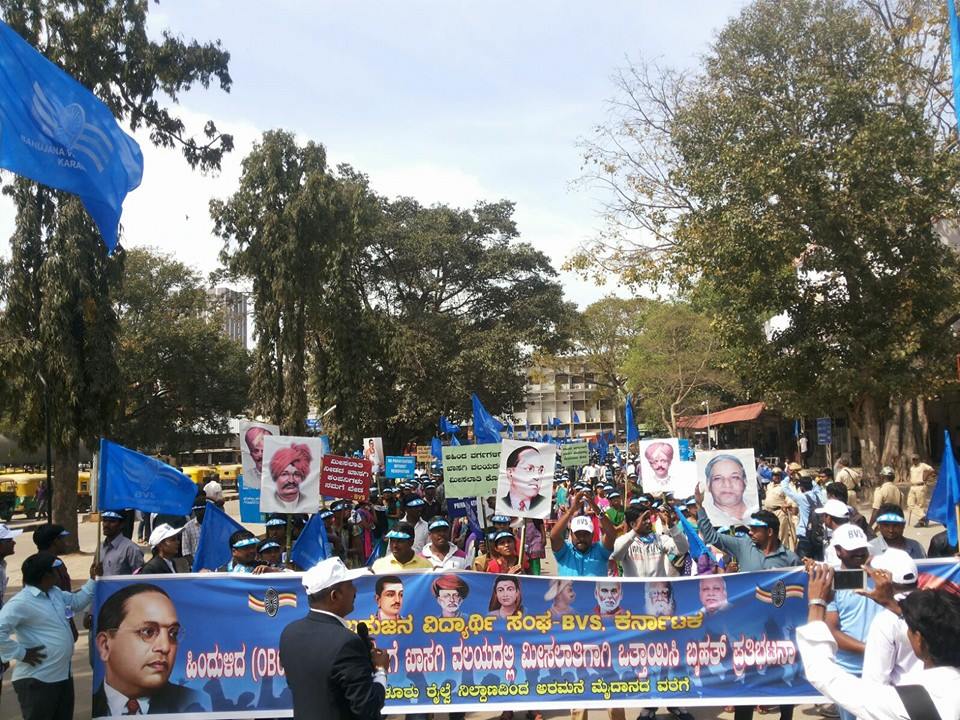Nikhil SanjayRekha Adsule
 “I had reasoned this out in my mind; there was one of two things I had a right to, liberty or death; if I could not have one, I would have the other; for no man should take me alive.” – Harriet Tubman
“I had reasoned this out in my mind; there was one of two things I had a right to, liberty or death; if I could not have one, I would have the other; for no man should take me alive.” – Harriet Tubman
In this post-truth era, where democratic and participatory ethos is being subordinated and where the delicate distribution of powers as envisaged by the Constitution are being eroded, one can witness a trajectory towards authoritarianism with the recent amendments made in a dictatorial fashion to the UAPA (Unlawful Activities (Prevention) Act) and NIA (National Investigation Agency) Act. Hon. Home Minister offered a false and an absurd explanation to these amendments by saying that these were in alignment with international laws — a claim that was refuted immediately by the Amnesty International. The law has had a prolonged history of targeting minorities and the oppressed communities. The judiciary has been vested with the responsibility of containing the trespassing done by the legislators and to re-align them by appropriately interpreting and safeguarding the principles stated in the Constitution of India. A holistic view of the UAPA and its working is discussed here via a transformational Judgement given by Hon.Justice Abhay Thipsay in Jyoti Chorge vs State of Maharashtra is discussed with its finer nuances below..
The Background of the Case
On October 3rd 2012, Bombay High Court delivered a historic judgment which granted bail to Jyoti Babasaheb Chorghe and Sushma Ramteke, both of whom belonged to a performing group called Kabir Kala Manch that uses poetry and music to fight against social injustice. A few years earlier, they were detained under the provisions of UAPA, accused of being Naxalites and part of the cultural front for the banned organization Communist Party of India (Maoist). It was alleged that they had Naxalite literature and publicity material in their possession. Thus, after spending one and a half years in jail, the bail applications of Jyoti Chorghe and Sushma Ramteke came before the Bombay High Court.
History of the Judiciary
A glance at the decisions by the Supreme Court of India, right from the ADM Jabalpur case to the Kartar Singh case and the CJI Ray’s decision to uphold the section 16-A (9) of the MISA (Maintenance of Internal Security Act), shows the attitude of ‘executive supremacy’ as displayed by the judiciary.
Another trait displayed by the top court of India has been that of ‘denial of remedies’ as evident in the ADM Jabalpur case by not allowing the enforcement of Article 21 of the Constitution during the emergency (Article 356) in the name of larger public interest. The next in order is the ‘jurisdiction of suspicion’, which was again displayed and authorized by the ADM Jabalpur, which placed as legitimate the ‘subjective satisfaction’ of the perception of the executive.
Another value that deserves mention is that of ‘salus populi suprema lex’, which in lay terms means ‘welfare is the supreme law’. It finds its genesis in the UK judgment of Liverside vs. Anderson. Ujjwal Kumar Singh points out that in the case of ADM Jabalpur, this value was interpreted by the Supreme Court as ‘what constitutes people’s welfare is essentially a matter of high state policy’ and thus established ‘unreviewable executive supremacy’.
To sum up the trajectory of SC and Judicial Behaviour pertaining to the above mentioned question, constitutional order consists of ‘State of Normalcy’ and ‘State of Exception’. What one can see in the trajectory of the judgments given by the Supreme Court is that the executive became the whole and sole authority to decide upon the State of Exception. The executive gets the upper hand to decide what is to happen to the rights of the citizens, and also becomes the custodian of rights and remedies. The judiciary has often assumed that the executive shall act in good faith and as per the moorings of society, as evidenced in Suresh Kumar Kaushal case of 2012.
The Judgment
The judgment authored by Hon. Justice Thipsay marked a stark departure from the judicial trajectory described above, as he interpreted the concept of membership in an organization by referring to the Arup Bhuyan vs. State of Assam (2011) case, which differentiated between active and passive membership. This case takes its cue from the Kedarnath Singh Case, which in turn relied upon the US Supreme Court in Brandenburg vs. Ohio case. This judgment declared Chorghe and Ramteke as passive members and most importantly took recourse to the civil rights’ tradition and pegged the interpretation of an anti-terror statute not to the State of Exception but to the Constitution of India.
Conclusion
Thus, the judgment instituted a judicial philosophy that places personal liberty, and freedom of speech and association at the heart of the Constitutional order. The words of Malcolm X have a lot of significance in this context : “It’s liberty or death. It’s freedom for everybody or freedom for nobody”.
~
References
1. Jyoti Chorghe vs State of Maharashtra.
2. Shreya Singhal vs Union of India.
3. Nandini Sundar vs State of Chattisgarh.
4. A.K Gopalan vs State of Madras.
5. ADM Jabalpur vs Shivakant Shukla.
6. Justice K.S Puttuswamy Vs Union of India.
7. Liversidge vs Anderson(1941)
8. Constituent Assembly Debates, Volume 7, Dr. Ambedkars Reply(16th september, 1949)
9. Courting the people by Anuj Bhuwania
10.State of Exception by Giorgio Amben
11.Wages of Impunity: power, justice and human rights by K.G Kannabiran
~~~
Nikhil SanjayRekha Adsule is currently pursiing LLM from Tata Institute of Social Sciences. He is an Ambedkarite who dreams of creating a Begumpura of genderless, casteless, classless society.










